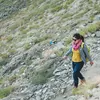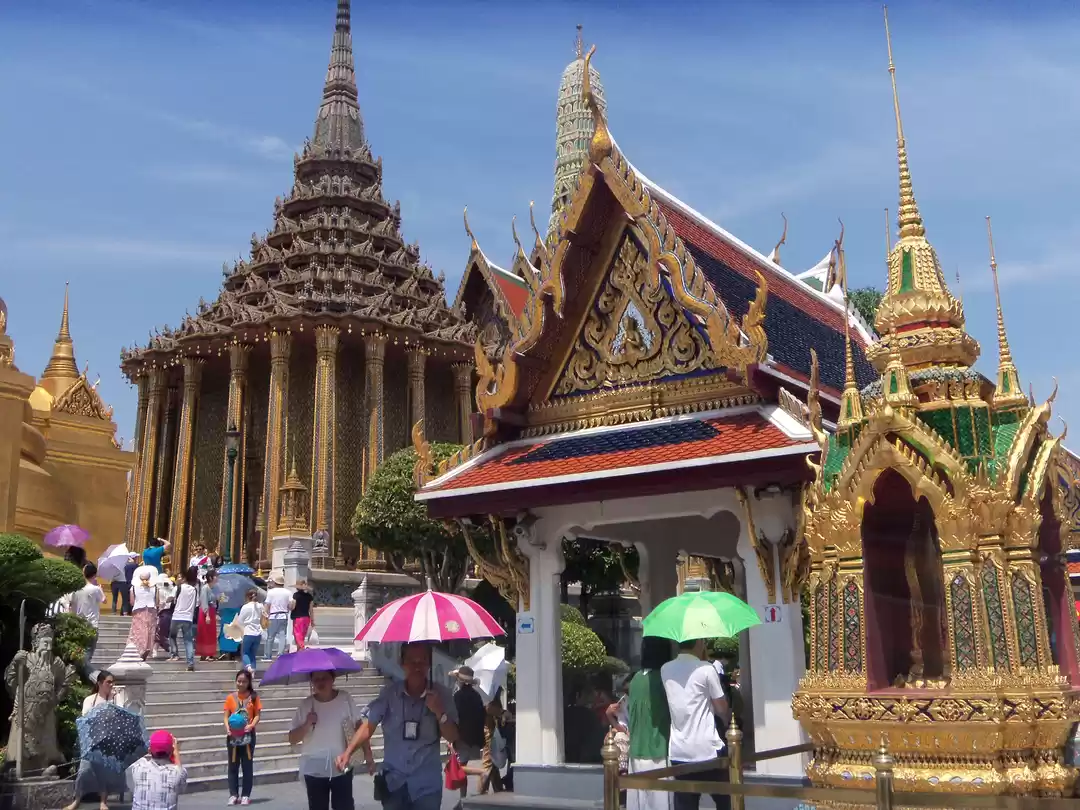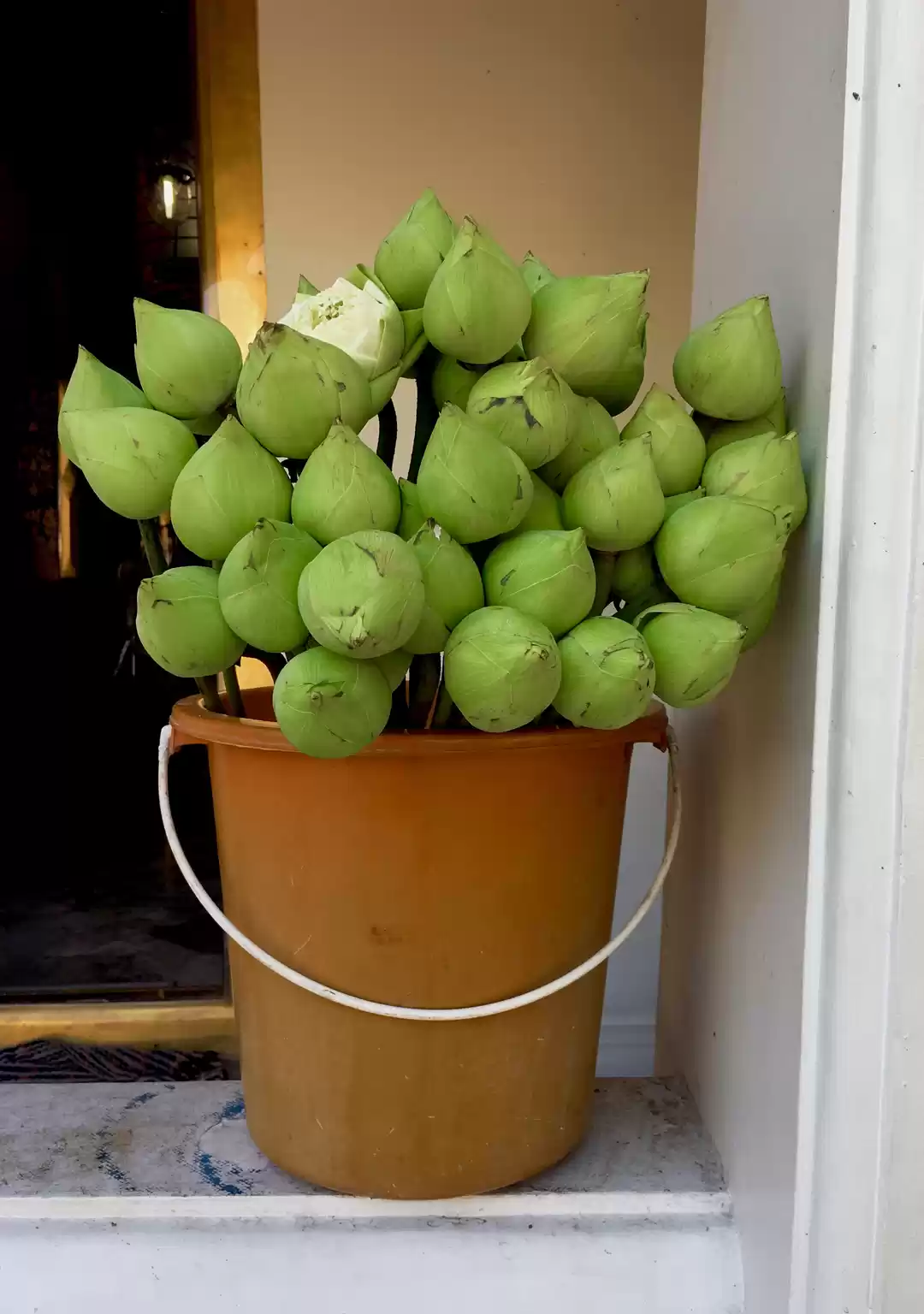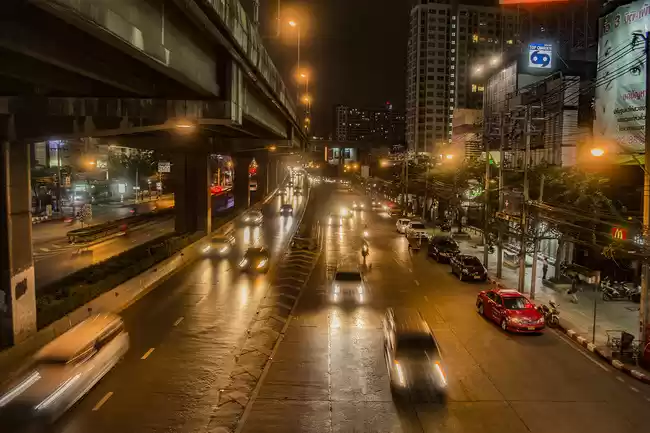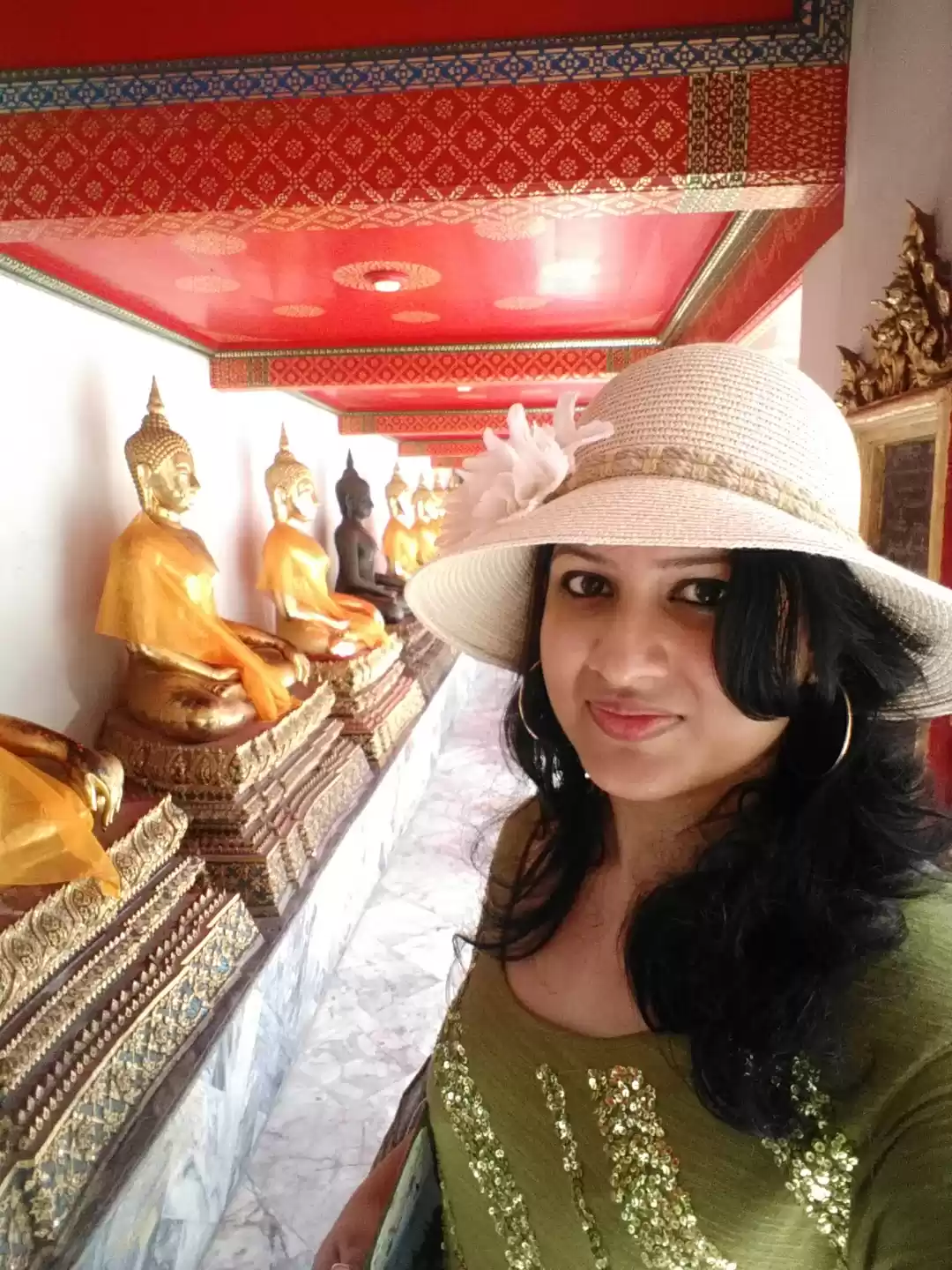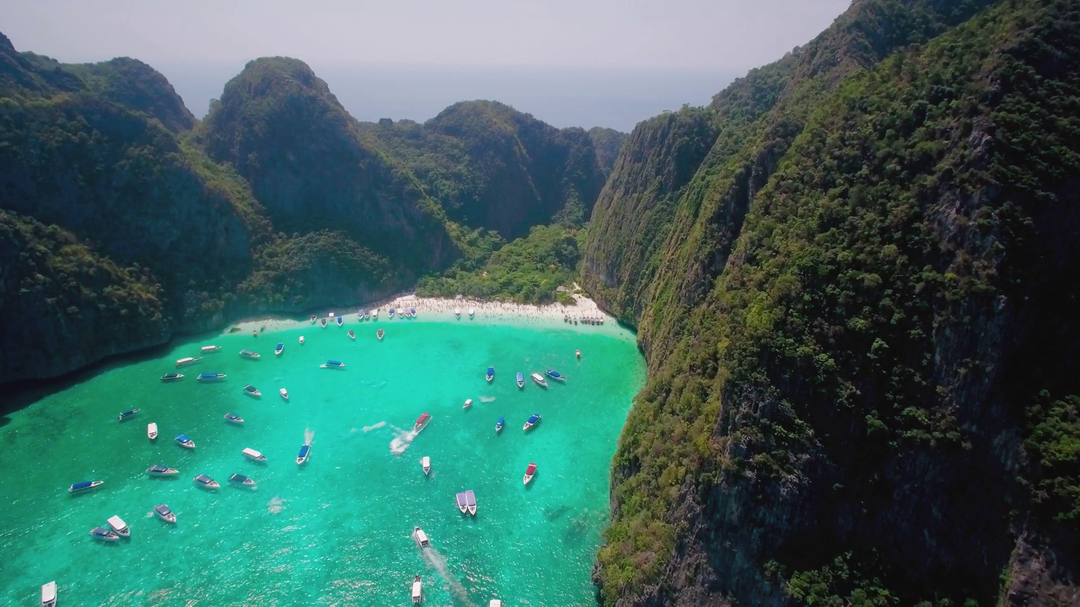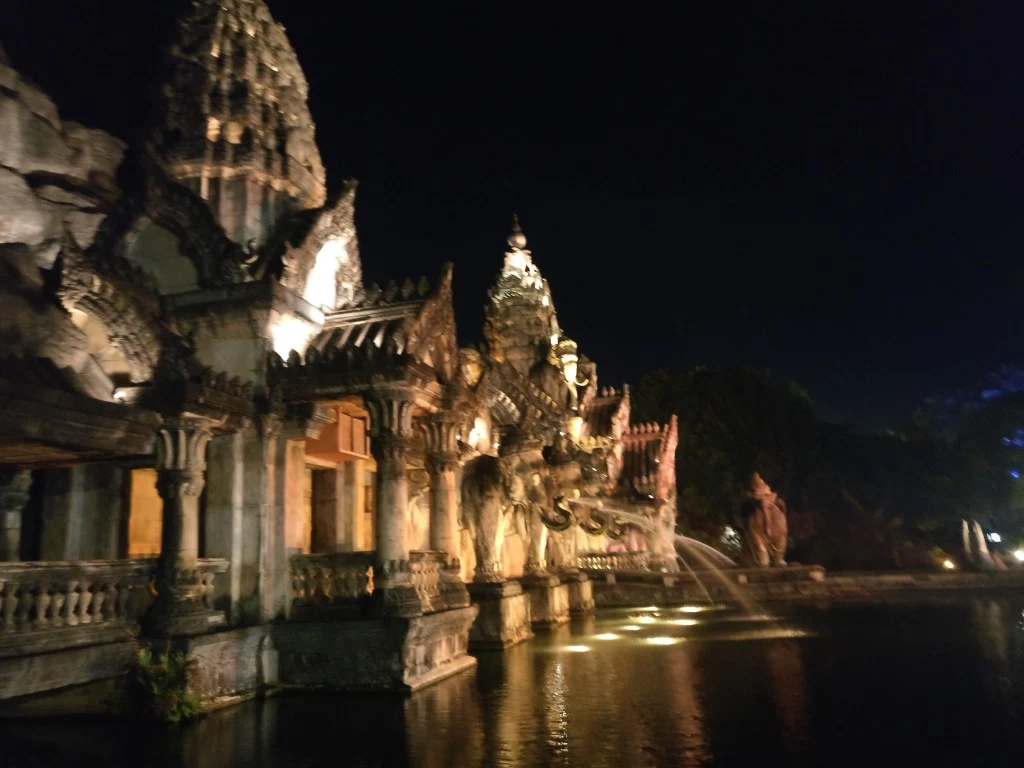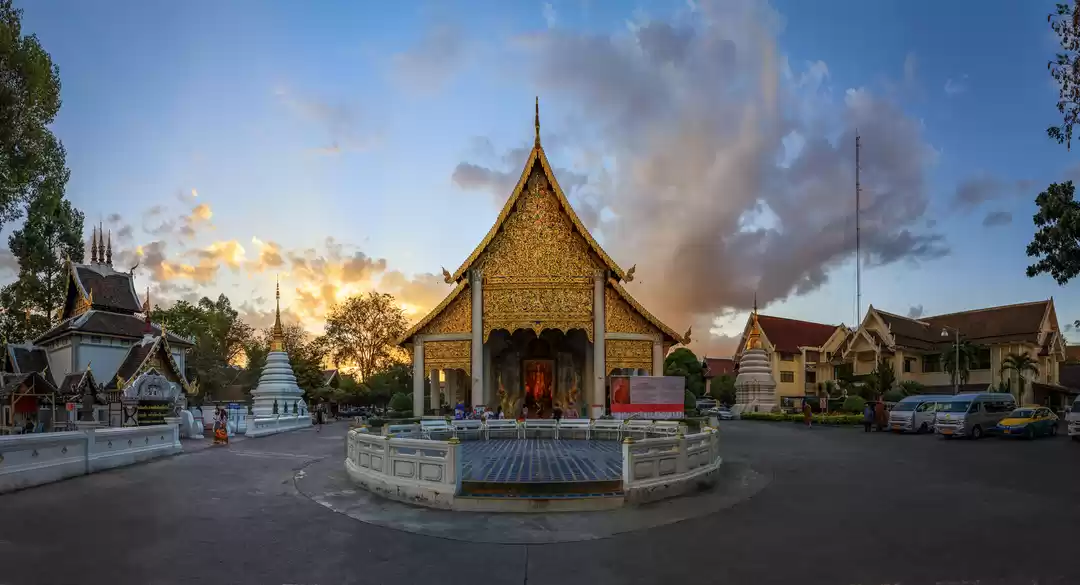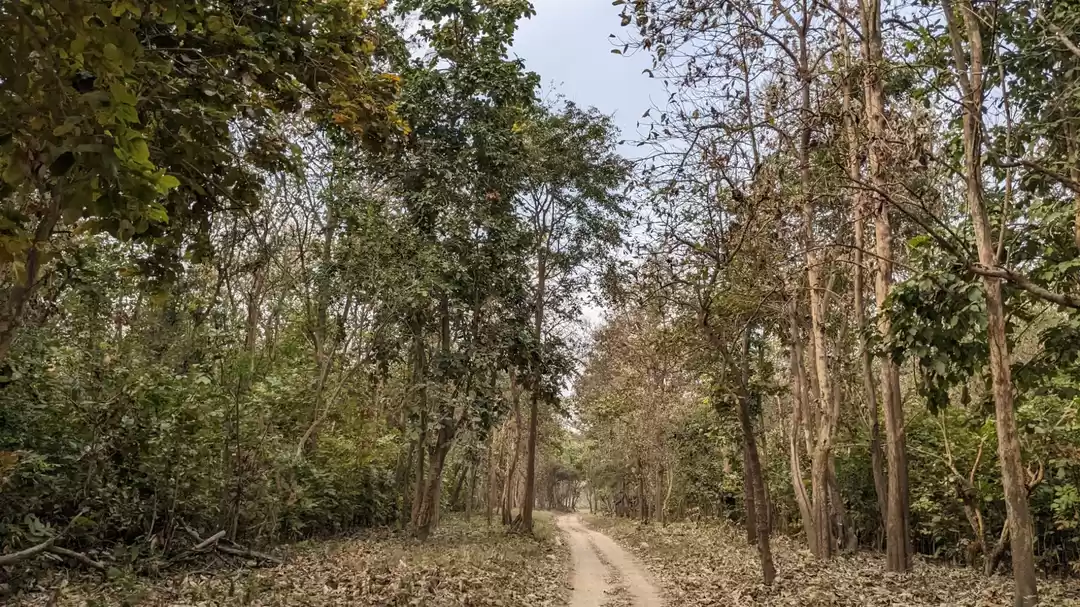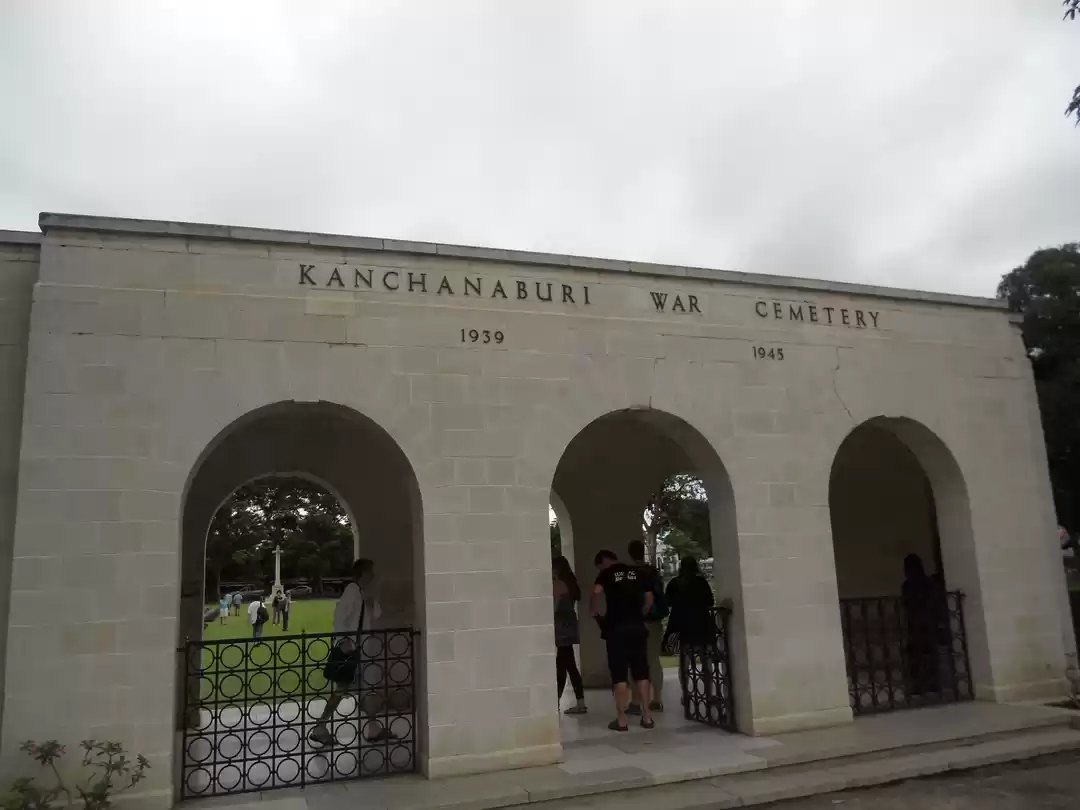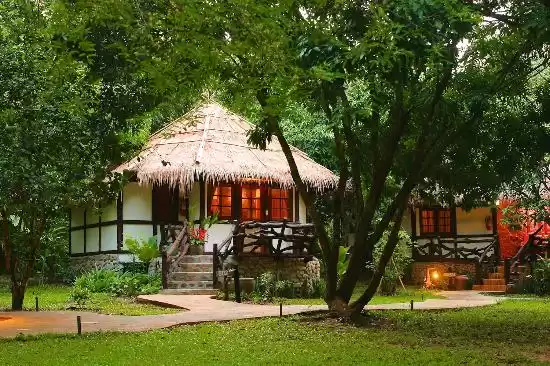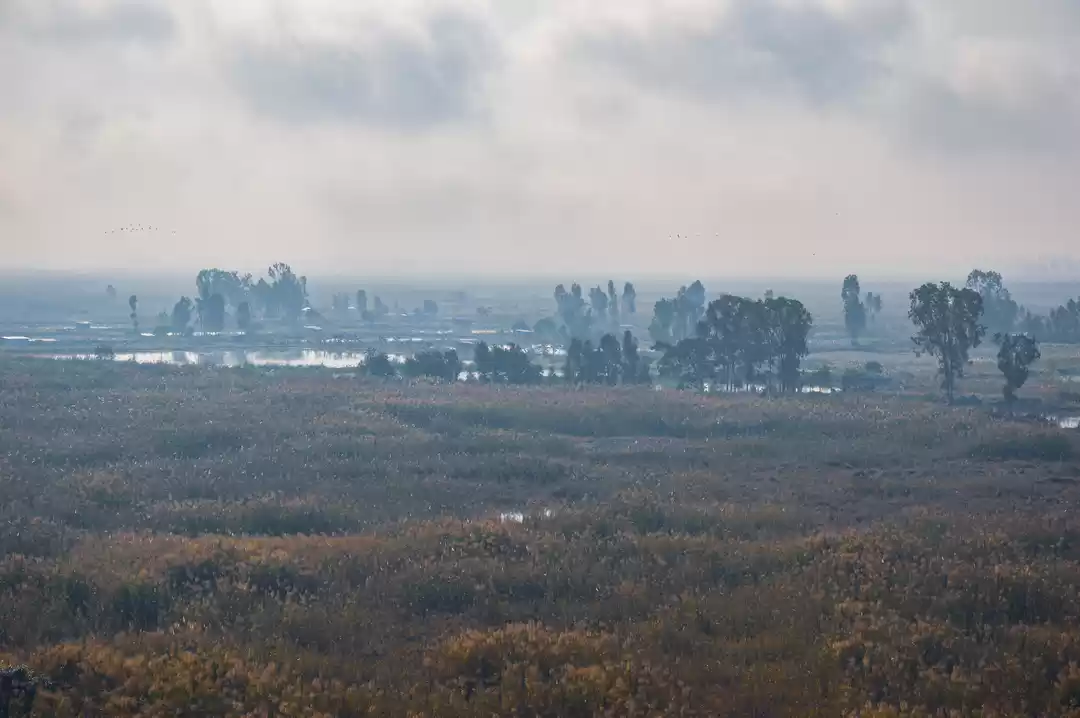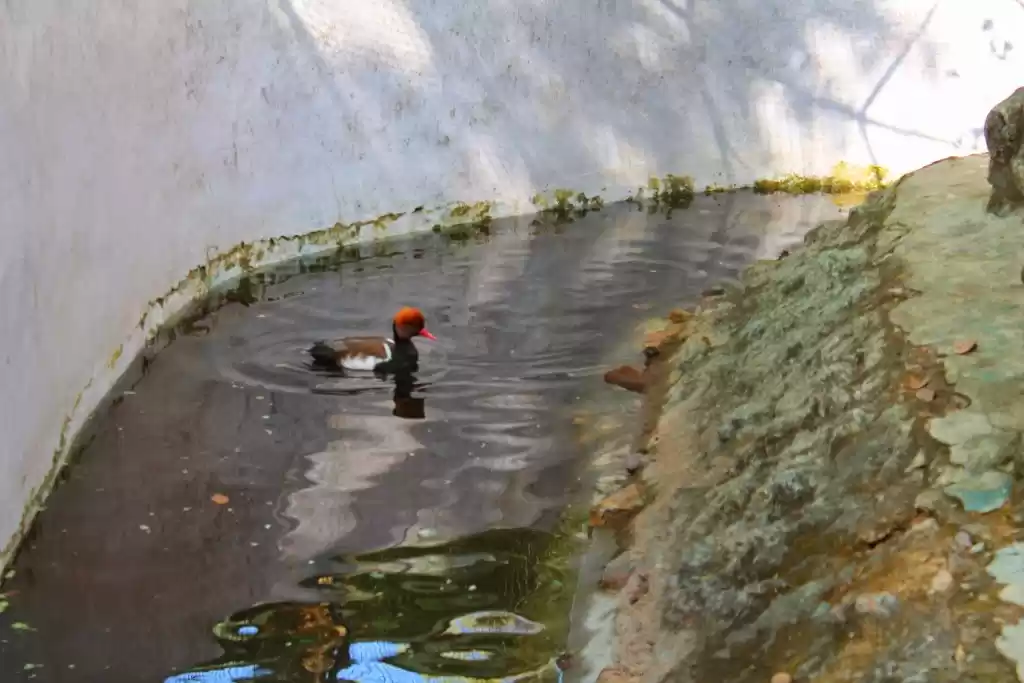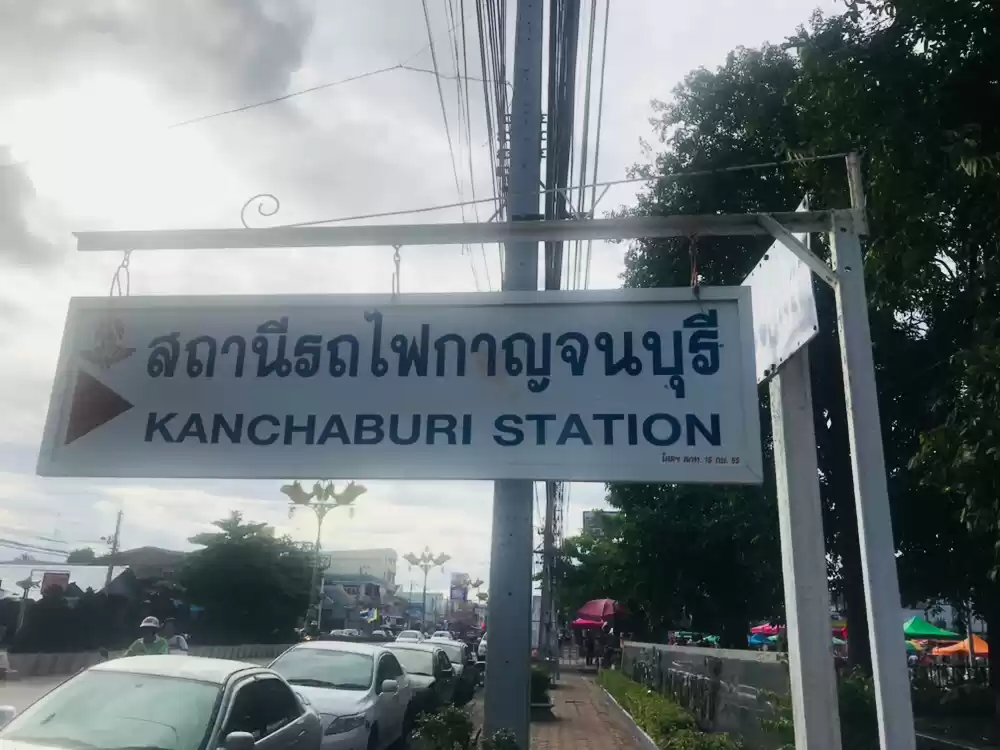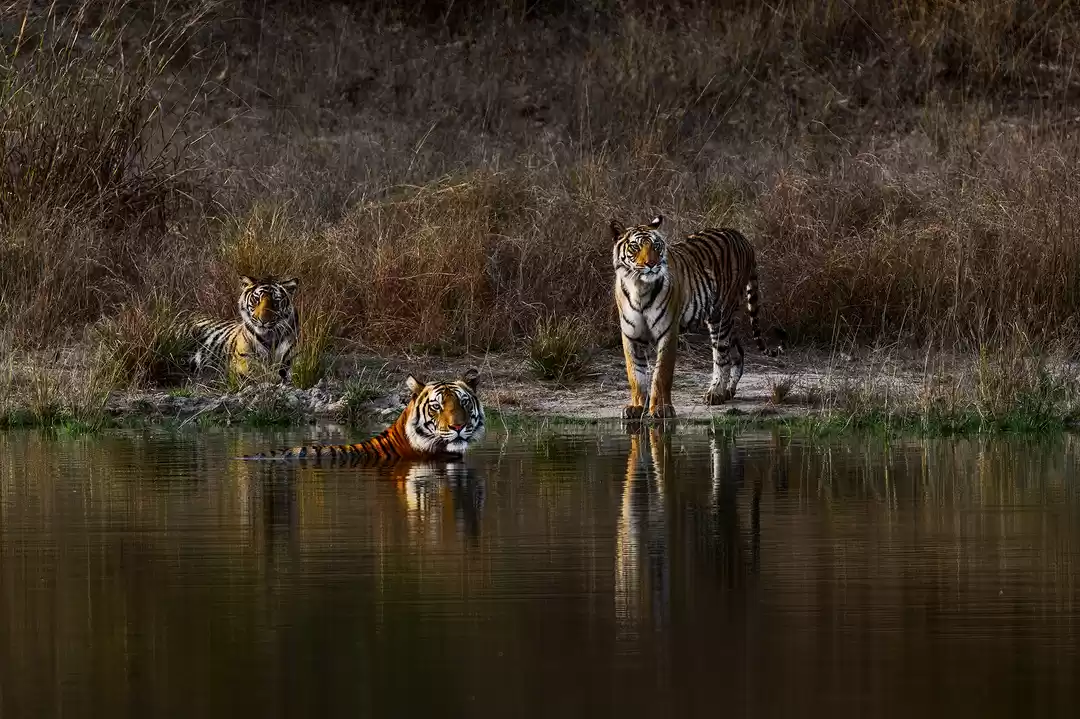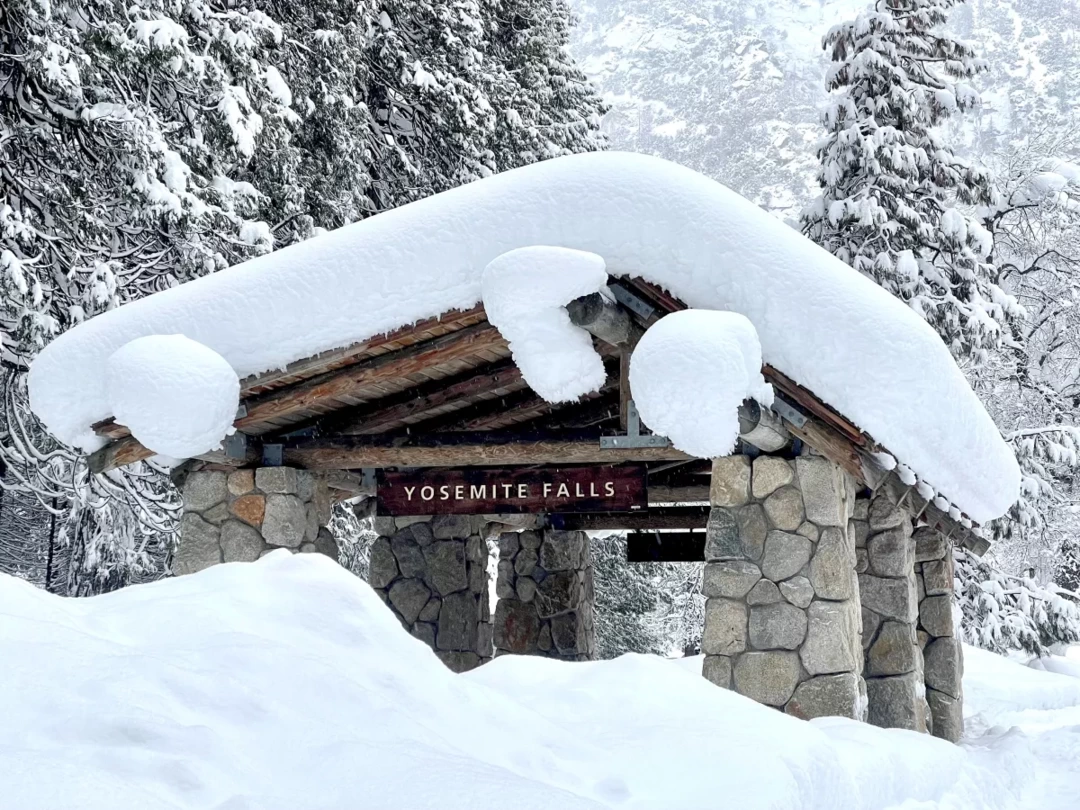Are you looking for a natural paradise in Thailand that will take your breath away? If so, you should definitely visit Erawan National Park, one of the most popular and scenic national parks in the country. Located in Kanchanaburi province, about 200 km west of Bangkok, this park is home to Erawan Waterfall, a stunning seven-tiered waterfall that resembles the mythical three-headed elephant, Erawan.
In this article, we will tell you everything you need to know about Erawan National Park, such as its history, name, features, wildlife, weather, entrance fee, timings, activities, and transportation. Whether you are a nature lover, an adventure seeker, or a relaxation seeker, you will find something to enjoy in this park. So, read on and discover why Erawan National Park is a must-visit destination in Thailand.

History and Name of Erawan National Park
Erawan National Park was established in 1975 as Thailand's 12th national park. It covers an area of 550 sq km, and protects a variety of habitats, such as mixed deciduous, evergreen, and dry evergreen forests, limestone hills, caves, and streams. The park is part of the Western Forest Complex, a UNESCO World Heritage Site that spans across Thailand and Myanmar, and is one of the largest and most biodiverse forest areas in Southeast Asia.
The park's name comes from the Hindu myth of Erawan, the three-headed elephant that carried Indra, the god of thunder. According to the legend, Indra created Erawan from the clouds to help him fight the demons. Erawan was a magnificent and powerful creature, with 33 heads and 1,000 tusks. The park's main attraction, Erawan Waterfall, is said to resemble the shape of Erawan's head, with its seven tiers and cascades.
Features and Wildlife of Erawan National Park
Erawan National Park is a natural wonderland, with a diverse and beautiful landscape. The park's geology is dominated by limestone, which forms the characteristic karst formations, cliffs, and caves. The park's flora is rich and varied, with over 800 species of plants, including orchids, ferns, bamboo, and rattan. The park's fauna is equally impressive, with over 80 species of mammals, 100 species of birds, 50 species of reptiles and amphibians, and 40 species of fish.
Some of the park's notable wildlife include elephants, gibbons, macaques, hornbills, kingfishers, butterflies, and fish. You can spot them in different parts of the park, depending on the season and time of day. For example, you can see elephants roaming in the forest, gibbons swinging in the trees, macaques playing near the water, hornbills flying in the sky, kingfishers diving for fish, butterflies fluttering in the flowers, and fish swimming in the pools. However, you should always keep a safe distance from the animals, and never feed or disturb them.
Erawan Waterfall Trail and Levels
The park's main attraction, Erawan Waterfall, is a spectacular seven-tiered waterfall that flows through a series of turquoise pools and cascades, surrounded by lush greenery and limestone cliffs. The waterfall is named after Erawan, the three-headed elephant, because its shape resembles the elephant's head. The waterfall is also considered sacred by the locals, who believe that it is inhabited by spirits and guardian angels.
The waterfall trail is a 3 km long path that leads to the waterfall's seven levels, each with its own name, features, and attractions. The trail is well-marked and maintained, but it can be steep and slippery in some parts, so you should wear proper shoes and be careful. The trail also has several facilities along the way, such as toilets, showers, lockers, restaurants, and shops. Here is a brief description of each level of the waterfall:
- Level 1: Lai Kuen Rang. This is the lowest and easiest level to reach, only 500 m from the park entrance. It has a large pool with a sandy bottom, where you can swim and relax. It also has a small cave behind the waterfall, where you can explore and see some stalactites and stalagmites.
- Level 2: Wang Matcha. This is the second level, about 1 km from the park entrance. It has a smaller pool with a rocky bottom, where you can swim and snorkel. It also has a natural slide, where you can slide down the smooth rocks and splash into the water.
- Level 3: Pha Nam Tok. This is the third level, about 1.5 km from the park entrance. It has a narrow pool with a deep bottom, where you can swim and dive. It also has a high cascade, where you can see the water falling from a height of 20 m.
- Level 4: Oke Nang Peesu. This is the fourth level, about 2 km from the park entrance. It has a wide pool with a shallow bottom, where you can swim and relax. It also has a low cascade, where you can see the water flowing over the rocks and forming a curtain of water.
- Level 5: Bua Mai Long. This is the fifth level, about 2.5 km from the park entrance. It has a small pool with a clear bottom, where you can swim and see the fish. It also has a cave, where you can see some bats and insects.
- Level 6: Dong Prueksa. This is the sixth level, about 2.7 km from the park entrance. It has a medium pool with a green bottom, where you can swim and enjoy the scenery. It also has a waterfall, where you can see the water splashing over the rocks and forming a rainbow.
- Level 7: Phu Pha Erawan. This is the seventh and highest level, about 3 km from the park entrance. It has a small pool with a blue bottom, where you can swim and feel the tranquility. It also has a waterfall, where you can see the water dropping from a height of 25 m and forming the shape of Erawan's head.
Some tips and information for hiking the waterfall trail are:
- The trail is open from 8 am to 4:30 pm, and you should start early to avoid the crowds and the heat.
- The trail can take from 2 to 4 hours to complete, depending on your pace and how long you stay at each level.
- The trail is suitable for all ages and fitness levels, but you should be prepared for some physical exertion and elevation changes.
- The trail is free to access, but you have to pay the park entrance fee of 300 baht for foreigners and 100 baht for locals.
- The trail has several checkpoints, where you have to show your ticket and leave your belongings in a locker. You can only bring a small bag, a towel, a camera, and a water bottle with you.
- The trail has several rules, such as no littering, no feeding, no fishing, no camping, and no alcohol. You should also respect the nature and the culture, and follow the instructions of the park staff.
Weather and Best Time to Visit Erawan National Park
Erawan National Park has a tropical climate, with three seasons: dry, wet, and cool. The dry season lasts from November to February, the wet season lasts from March to June, and the cool season lasts from July to October. The park's weather affects its conditions and attractions, such as the waterfall's volume, the forest's greenness, and the wildlife's activity.
The best time to visit the park is during the dry season or the early wet season, when the weather is cooler, the waterfall is more voluminous, and the crowds are less. The average temperature during this time is around 25°C, and the average rainfall is around 50 mm per month. The worst time to visit the park is during the late wet season or the early cool season, when the weather is hotter, the waterfall is more dry, and the crowds are more. The average temperature during this time is around 30°C, and the average rainfall is around 200 mm per month.
Some advice and information for visiting the park are:
- You should check the weather forecast before you go, and be prepared for sudden changes and showers.
- You should wear light and comfortable clothes, such as shorts, t-shirts, and sandals, and bring a hat, sunglasses, and sunscreen to protect yourself from the sun.
- You should bring a swimsuit, a towel, and a change of clothes, and wear a waterproof bag or case for your valuables, as you will get wet and sweaty.
- You should bring some snacks, drinks, and insect repellent, and avoid eating or drinking anything from the park's vendors, as they may be overpriced or unhygienic.
- You should bring some cash, as there are no ATMs or credit card facilities in the park.
Entrance Fee, Timings, and Facilities of Erawan National Park
Erawan National Park has an entrance fee, timings, and facilities that you should know before you visit. The park's entrance fee is 300 baht for foreigners and 100 baht for locals, and you have to pay it at the park's gate. The park's timings are from 8 am to 4:30 pm, and you have to leave the park by 6 pm. The park's facilities include parking, toilets, showers, , lockers, restaurants, shops, and information centers. The park's entrance fee covers the access to the park's attractions and facilities, except for the lockers, which cost 20 baht per use.
The park also has some rules and regulations that you should follow, such as:
- No littering. You should dispose of your trash in the designated bins, or take it with you when you leave.
- No feeding. You should not feed any animals in the park, as it can harm their health and behavior.
- No fishing. You should not fish in any of the park's streams or pools, as it can damage the ecosystem and the wildlife.
- No camping. You should not camp in any of the park's areas, as it can disturb the nature and the culture.
- No alcohol. You should not drink any alcohol in the park, as it can impair your judgment and safety.
If you violate any of these rules, you may face a fine or a ban from the park. You should also respect the nature and the culture of the park, and follow the instructions of the park staff.
Activities and Things to Do in Erawan National Park
Erawan National Park offers a range of activities and things to do for different types of travelers, such as families, solo travelers, couples, and groups. You can enjoy the park's natural beauty, adventure, and relaxation, depending on your preferences and interests. Here are some of the park's activities and things to do:
- Hiking. You can hike the waterfall trail, which is the park's main activity and attraction. You can explore the park's landscape, geology, flora, and fauna, and see the waterfall's seven levels and features. You can also hike to some of the park's other attractions, such as the caves, the streams, and the viewpoints.
- Swimming. You can swim in any of the waterfall's pools, which are clean, clear, and refreshing. You can also swim in some of the park's other streams, such as Huai Mae Khamin and Huai Mong Lai, which are also scenic and soothing.
- Snorkeling. You can snorkel in some of the waterfall's pools, especially level 2 and level 5, where you can see the fish and the underwater rocks. You can also snorkel in some of the park's other streams, such as Huai Mae Khamin and Huai Mong Lai, where you can see more fish and aquatic plants.
- Photography. You can take photos of the park's scenery, wildlife, and attractions, which are all photogenic and picturesque. You can capture the waterfall's beauty, the forest's greenness, the animals' cuteness, and the caves' mystery. You can also take selfies and group photos, and share them with your friends and family.
- Wildlife watching. You can watch the park's wildlife, which are diverse and fascinating. You can see the elephants, gibbons, macaques, hornbills, kingfishers, butterflies, and fish, and learn more about their habits and behaviors. You can also listen to the sounds of the forest, such as the birds' songs, the monkeys' calls, and the water's splashes.
- Relaxing. You can relax in the park, which is peaceful and serene. You can sit by the water, lie on the sand, or hang on a hammock, and enjoy the view and the breeze. You can also meditate, read, or nap, and feel the calmness and the harmony.
Some of the park's other attractions that you can visit are:
- The caves. The park has four caves that you can explore, namely Phartat, Wang Bahdan, Rua, and Mi. They are located near the waterfall trail, and you can access them by foot or by boat. They have different sizes, shapes, and features, such as stalactites, stalagmites, columns, and chambers. They are also home to some bats and insects, which you can see and hear.
- The streams. The park has two streams that you can visit, namely Huai Mae Khamin and Huai Mong Lai. They are located near the park entrance, and you can access them by foot or by car. They have different lengths, widths, and depths, and they flow through the forest and the hills. They are also home to some fish and aquatic plants, which you can see and touch.
- The viewpoints. The park has two viewpoints that you can visit, namely Khao Hin Lan Pee and Khao Nom Nang. They are located near the park entrance, and you can access them by foot or by car. They have different heights, distances, and angles, and they offer panoramic views of the park and the surrounding area. They are also great places to watch the sunrise and the sunset, and to take photos.

How to Get to Erawan National Park
Erawan National Park is located in Kanchanaburi province, about 200 km west of Bangkok, and about 65 km north of Kanchanaburi town. You can get to the park by various transportation options, such as buses, trains, taxis, minivans, motorbikes, and tours. Each option has its own costs, schedules, and advantages and disadvantages, depending on your budget, time, and convenience. Here are some of the park's transportation options:
- Buses. You can take a bus from Bangkok's Southern Bus Terminal (Sai Tai Mai) to Kanchanaburi town, which costs about 100 baht and takes about 2 hours. Then, you can take another bus from Kanchanaburi's Bus Terminal to Erawan National Park, which costs about 50 baht and takes about 1.5 hours. The buses run from 5 am to 6 pm, and they stop at several places along the way, such as the Bridge over the River Kwai and the Hellfire Pass.
- Trains. You can take a train from Bangkok's Thonburi Railway Station to Kanchanaburi town, which costs about 100 baht and takes about 3 hours. Then, you can take a taxi or a minivan from Kanchanaburi's Railway Station to Erawan National Park, which costs about 200 baht and takes about 1 hour. The trains run from 7:30 am to 1:55 pm, and they offer scenic views of the countryside and the river, as well as the historical Death Railway and the Bridge over the River Kwai.
- Taxis. You can take a taxi from Bangkok's Suvarnabhumi Airport or Don Mueang Airport to Erawan National Park, which costs about 3,000 baht and takes about 3 hours. You can also take a taxi from Kanchanaburi town to Erawan National Park, which costs about 1,000 baht and takes about 1 hour. The taxis run 24/7, and they offer comfort, convenience, and flexibility, as well as the option to stop at other attractions along the way, such as the Bridge over the River Kwai and the Hellfire Pass.
- Minivans. You can take a minivan from Bangkok's Victory Monument or Mo Chit to Kanchanaburi town, which costs about 150 baht and takes about 2 hours. Then, you can take another minivan from Kanchanaburi's Bus Terminal or Railway Station to Erawan National Park, which costs about 100 baht and takes about 1 hour. The minivans run from 6 am to 6 pm, and they offer speed, convenience, and affordability, as well as the option to share the ride with other travelers.
- Motorbikes. You can rent a motorbike from Bangkok or Kanchanaburi town, which costs about 200 baht per day and takes about 3 hours to reach the park. You can also rent a motorbike from the park's entrance, which costs about 100 baht per hour and takes about 15 minutes to reach the waterfall. The motorbikes run 24/7, and they offer freedom, adventure, and fun, as well as the option to explore the park and the surrounding area at your own pace.
- Tours. You can book a tour from Bangkok or Kanchanaburi town, which costs about 1,000 baht per person and takes about 8 hours to complete. The tour includes the transportation, the entrance fee, the guide, and the lunch, as well as the option to visit other attractions along the way, such as the Bridge over the River Kwai and the Hellfire Pass. The tour runs daily, and it offers convenience, safety, and information, as well as the option to meet other travelers.
Some tips and information for getting to the park are:
- You should buy your tickets in advance, especially for the buses, trains, and tours, as they can sell out quickly, especially during the peak season (November to February).
- You should board and alight at the designated stops, such as the park's gate, the waterfall's entrance, or the caves' entrance, and not at any random places, as it can be dangerous and illegal.
- You should arrange your transfers or pickups in advance, especially for the taxis, minivans, and motorbikes, as they can be hard to find or expensive at the park, especially during the off season (July to October).
Conclusion
Erawan National Park is a natural paradise in Thailand that will take your breath away. It is one of the most popular and scenic national parks in the country, and it is home to Erawan Waterfall, a stunning seven-tiered waterfall that resembles the mythical three-headed elephant, Erawan. You can relax in the park, which is peaceful and serene. You can sit by the water, lie on the sand, or hang on a hammock, and enjoy the view and the breeze. You can also meditate, read, or nap, and feel the calmness and the harmony.
Erawan National Park is a natural paradise in Thailand that will take your breath away. It is one of the most popular and scenic national parks in the country, and it is home to Erawan Waterfall, a stunning seven-tiered waterfall that resembles the mythical three-headed elephant, Erawan. You can enjoy the park's natural beauty, adventure, and relaxation, depending on your preferences and interests. You can hike the waterfall trail, swim in the pools, snorkel with the fish, take photos of the scenery, watch the wildlife, or relax by the water. You can also visit some of the park's other attractions, such as the caves, the streams, and the viewpoints. You can also learn more about the park's history, name, features, weather, entrance fee, timings, and transportation.
Whether you are a nature lover, an adventure seeker, or a relaxation seeker, you will find something to enjoy in this park. So, what are you waiting for? Book your trip to Erawan National Park today, and discover why it is a must-visit destination in Thailand.


